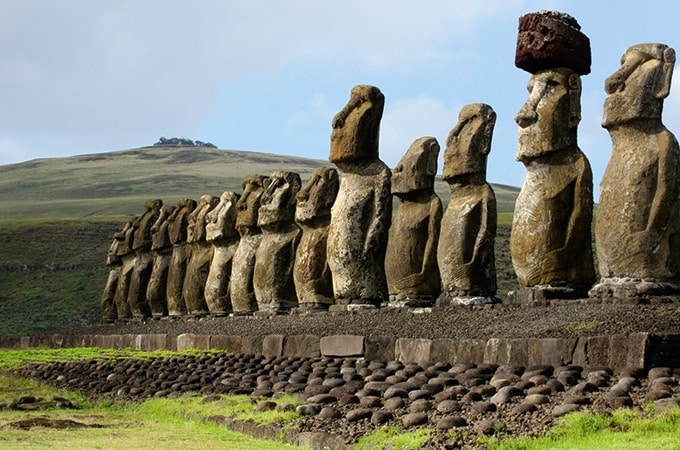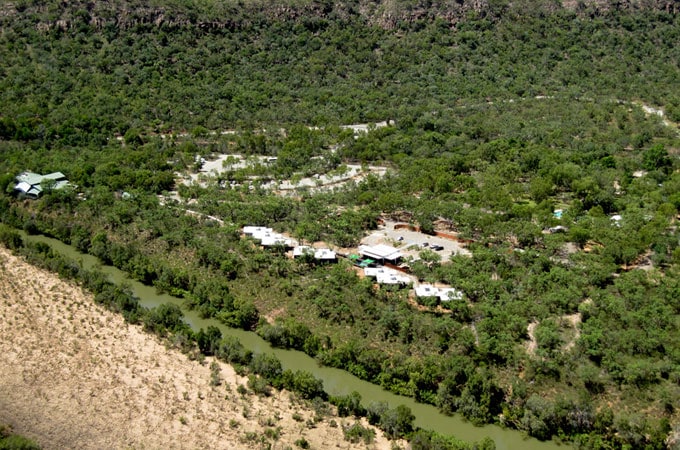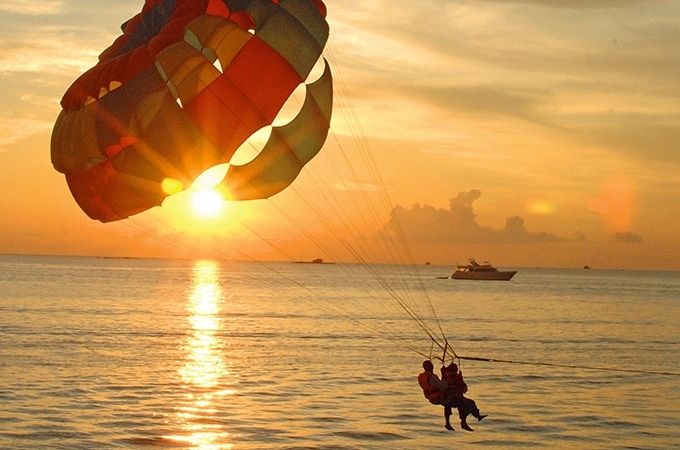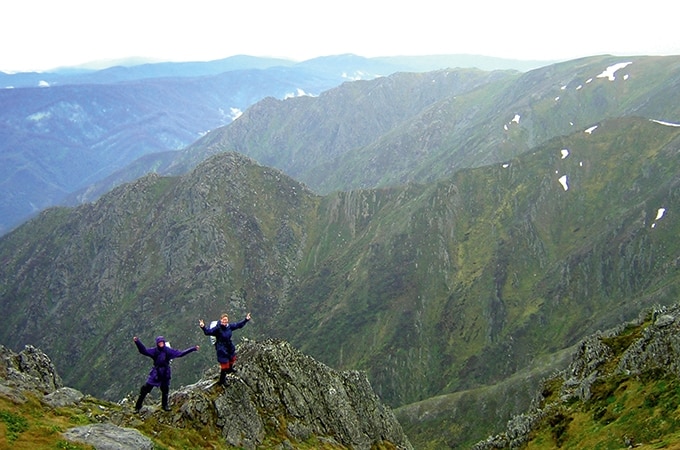Embark on a unique journey of discovery as you explore the hidden secrets of Easter Island. This remote and mysterious island offers an unparalleled adventure for those seeking intrigue and excitement. Our travel guide will help you plan an unforgettable trip to this fascinating destination.
Words: Rhonda Bannister

The megalithic stone monuments of Easter Island called moai stand like silent sentinels gazing solemnly through painted-on eyes over this tiny island. They are one of the unexplained wonders of the ancient world, an awesome sight that captivates everyone lucky enough to come here.
So many questions remain unanswered. Why are they here? How did they get to where they stand? Why were they destroyed by the very people who built them?
All enigmatic questions but it’s this very intrigue that brings us, and so many other curious travellers to this tiny, blink and you’ll miss it, speck of land which sits almost dead centre in the middle of nowhere.
WHERE IS EASTER ISLAND & HOW DO I GET THERE?
Sitting 3,700 kilometres off the coast of Chile and nearly 2,000 kilometres from Pitcairn Island in the vast Pacific, it is the most remote inhabited place on earth. A Territory of Chile, LATAM Airways offers flights from Santiago to Mataveri International Airport every day of the week, taking just over 5 hours. It’s a long trip to get here from Australia but you’ll find that the memory of walking around this open air museum and seeing these world-famous, mysterious monoliths with your own eyes and drinking in the mysterious history of the island and its people is well worth the pilgrimage, especially when tied in with further travels through Chile.
Related article: The Ultimate Travel Guide to Chile for Couples
WHAT WE KNOW
Colonised by the Polynesians from the Marquesas Islands between 800 to 1200 A.D. their social strata was interesting in the way that higher castes lived in villages along the coastline whilst lower castes sited their villages in the interior. Their worship of ancestors manifested in the carving of moai which were then placed on a platform, or ahu, to protect their villages, with most of them appearing to be connected to the richer coast villages.
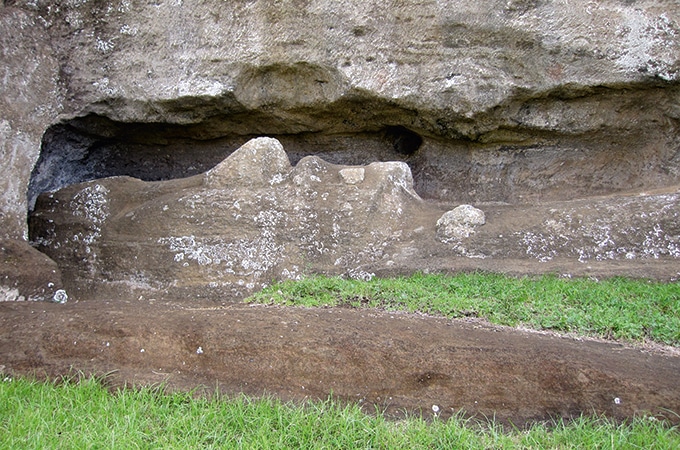
Records show that almost 900 moai were created, each taking up to one year to carve with stone chisels, so one of the first places to visit is Rano Raraku quarry to see where they were created out of the volcanic rock before being transferred to their designated ahu.
WHAT WE DON’T KNOW
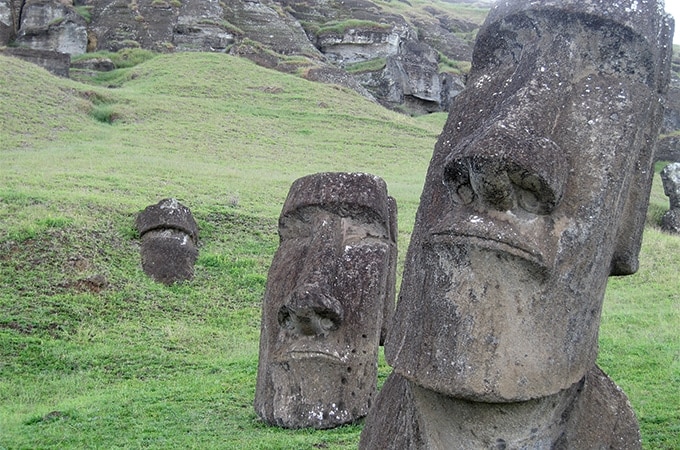
There’s up to a hundred moai scattered around the hills, most buried up to their necks and all sightless because it was only when they were placed on their ahu that the eyes were painted on. We saw several unfinished carvings embedded in the rock wall, some half finished, others just started and wondered why the carvers had stopped, but even our knowledgeable guide Beno couldn’t provide an answer.
Related: Discover Peru with our travel guide for couples
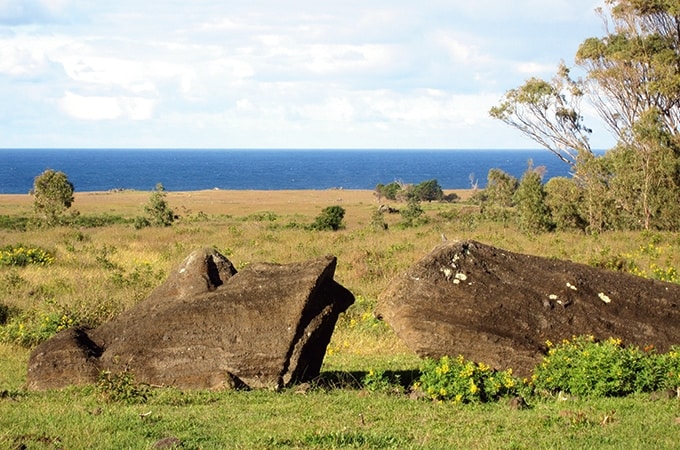
As we walked around the island we saw so many broken parts of moai – a head here, a body there, still lying where they must have fallen as they were being carted to their final destination, but there were also others that had their eyes, so they must have already been placed on their ahu.
HOW WERE MOAI MOVED?
How did they cart these gigantic stone monuments, some weighing up to 80 tonnes up to five or six kilometres over rough and rocky terrain? Local lore provides a few different scenarios on how they moved these giants ranging from hundreds of people dragging them on rope pulleys over timber rollers (they say there are no trees left on the island as they were all cut down to provide rollers and scaffolding) to ‘walking’ them side to side (which could explain the high mortality rate of sightless statues as they over-balanced and tumbled); to spiritual ‘mana’ moving them magically!
They also think that there was a battle between different villages, probably caused by food shortages, and that the moai were smashed when they destroyed the villages in battle, which is why there are remnants everywhere. One thing we do know for a fact was that in 1960 Chile was hit by the world’s biggest earthquake resulting in a tsunami which battered Easter Island and swept many of the moai kilometres into the interior, but this was long after the historic cataclysmic event or events of destruction had already taken place. Today some of the moai are repaired and back on their ahu, drawing visitors from around the world and providing the islanders with one of their only streams of income.
WHAT OTHER MAGICAL THINGS CAN WE DO AND SEE HERE?
* The restored village of Orongo with its stone houses buried into the hillside and its ancient petroglyphs are amazing.
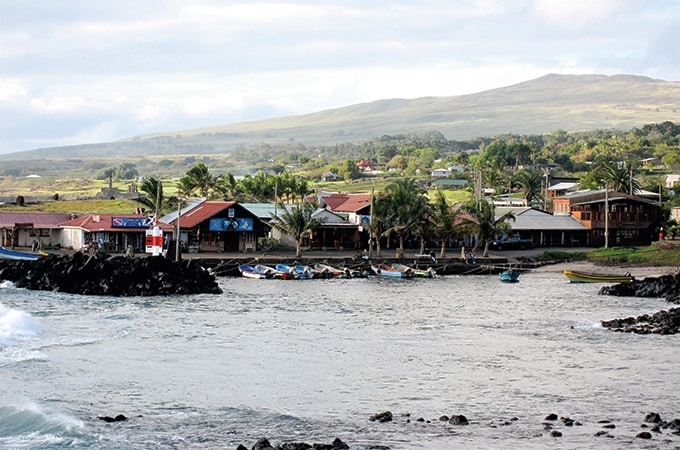
* The small capital town of Hanga Roa where most of the islanders live because there’s no electricity in outer areas is worth dropping into to visit the shops for a souvenir .
* The stunning landscape of volcanic, lake filled craters and rugged, rocky coastline punctuated in places by white sand beaches and groves of imported palm trees is mesmerising.
* Don’t miss the large system of connected caves where crops were planted and people hid during periods of war. Underground galleries have been found over 7km in length which form the largest system of volcanic caves in Chile.
There’s some great half-day, full-day and two-day tours to enjoy especially keeping in mind that you must be accompanied by a guide when visiting archeological sites.
WHERE TO STAY
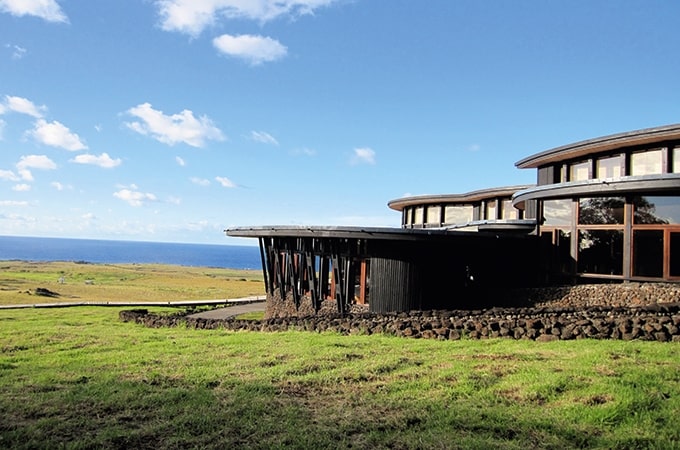
We stayed with Explora at the Hotel Posada de Mike Rapu situated in the midst of rolling green pasture in the centre of the island. Stylishly designed by José Cruz Ovalle using natural, organic textures of stone and timber, it’s not until you’ve done a bit of exploring around the ancient sites that you realise that the hotel’s curves are based on the original native design of rock houses. Given the quality of the private and public spaces, the food, the service and, best of all, their local Rapanui guides like Beno whose father and grandfather helped with past and present excavations of moai and who was an absolute font of local knowledge – it’s this sort of service that really sets Explora apart when visiting remote areas and why we highly recommend them when travelling through Chile.
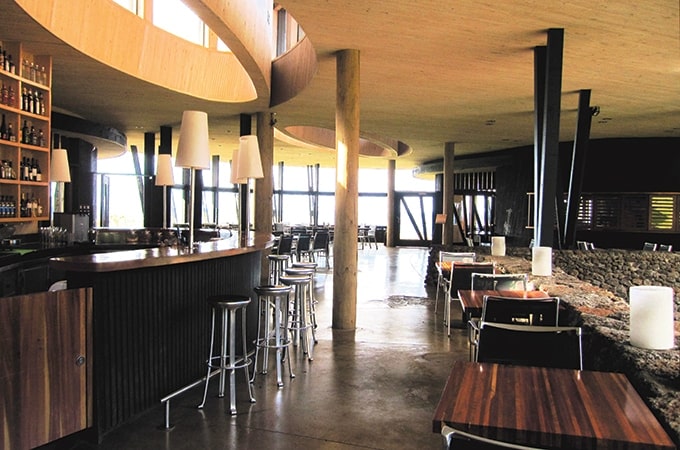
WHEN IS THE BEST TIME TO VISIT EASTER ISLAND?
Shoulder seasons from April to June and October to December when there’s less visitors and it’s easier to book flights and hotels is the best time.
TRAVEL REQUIREMENTS
Australians will now need an e-visa valid for stays up to 90 days in the country, replacing the previous visa on arrival system and reciprocity fee that Australian travelLers were obliged to use. https://www.handyvisas.com/chile-visa/
